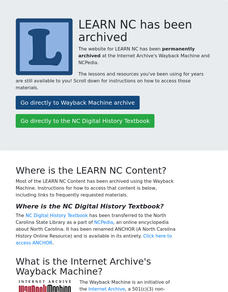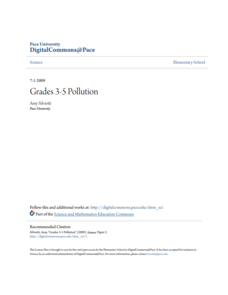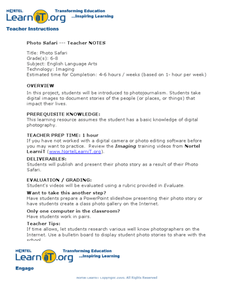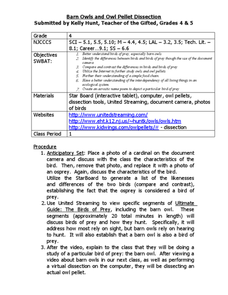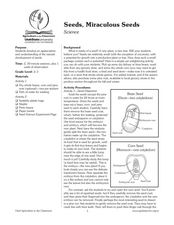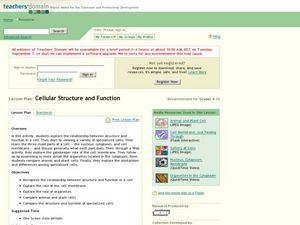Curated OER
Field Trip to Living History Farms
Students tour "Living History Farms" in Iowa. In this field trip preparation lesson, students observe ways Native Americans began growing crops in the 1700's as well as how the farm changed in the 1800's. Upon their return from the trip,...
Curated OER
Where We Live
Students make a 'where we live' chart to find what's common and unique about where they live. In this living analysis lesson, students complete a chart about where they live.
Curated OER
Vegetable Colors
In this vegetables learning exercise, students draw a label some green vegetables. Students then draw a label some non-green vegetables. Students then tell where non-green vegetables grow.
Curated OER
What Makes a Dog a Dog
First graders recall and verbally list the parts of a dog, or a chosen subject, based on observations using the senses. They discriminate between living and non-living subjects, and create artistic representations of the parts of a dog.
Curriculum Corner
Guest Teacher Plans (Grade 2)
Be prepared the next time you're in need of a substitute with a daily plan equipped with an assortment of activities covering subjects math, reading, word work, writing, and science.
K20 LEARN
It's Alive! Or, Is It?
Seems like a fairly simple question—until you begin asking your class! Get pupils acquainted with the characteristics of life through pairs classification, discussion, and scientific reading. The lesson plan, part of the K20 series, also...
Pace University
Pollution
Over the course of 10 days, scholars take a pre-assessment to place them in one of three leveled groups. Whole-class and in small groups, pupils take part in read-alouds, field trips, hands-on activities, and complete learning contracts...
It's About Time
Energy Flow in Ecosystems
Emerging biochemists more fully understand the flow of energy in ecosystems as they explore the laws of thermodynamics and relate them to energy transfer in food chains. They also investigate heat loss from the human body and how...
Science Matters
Mighty Microorganisms
How can you tell if a microorganism is helpful or detrimental to an ecosystem? Learners inspect slides or pictures of microorganisms and record their observations to identify those that are beneficial or harmful. They then pretend to...
PBS
The Lorax
Accompany a reading of Dr. Seuss' tale, The Lorax, with a five-item worksheet. Questions challenge scholars to list characters' names, use text details to answer inquiries, and describe the moral of the story.
Curated OER
A Walk in the Forest
Students explore interrelationships among plants and animals. Students listen to Where to, Little Wombat? by Charles Fuge, and contribute words and phrases for a classroom animal and plant survival chart. Students take a walk in a...
Curated OER
The Impacts of Human Activities on Biodiversity in New Haven County
Students discover how plants and animal ecosystems are affected by the growth of a city. In this ecology lesson, students study and observe a plant over a period of time. They develop a creative presentation of their data and share them...
Curated OER
Countries and Nationalities
In this countries and nationalities worksheet, students write the correct country of where people live, complete the sentences with words given, and choose if things are a language, country, and more. Students complete 4 activities.
Curated OER
Photo Safari
Students take photographs of people and things that impact their lives. In this photojournalism lesson plan, students learn how to use a photo to tell a story and present their project.
Curated OER
Barn Owls and Owl Pellet Dissection
Students explore birds of prey and food chains. In this ecosystems and birds of prey cross curriculum science and literacy lesson, students brainstorm characteristics of birds after viewing photographs. Students view a video and document...
Curated OER
Word Hunt
In this word hunt worksheet, students make lists of things that . . . are described in phrases. Students name thirty groups of things.
Curated OER
Word Hunt
In this word hunt worksheet, learners supply as many words as possible to name things that are described. In this short answer worksheet, students write nouns for thirty descriptions.
Curated OER
Seeds, Miraculous Seed
Students investigate relationships between plants and animals and how living things change during their lives. In this life cycle lesson, students split different types of seeds apart to see the beginning life stages of future plants.
Curated OER
Dalai Lama Peace and Conflict Resolution
Students explore philosophy by researching the Dalai Lama. In this peaceful living lesson, students discuss the Dalai Lama and his unique views of the world before reading the story Can You Say Peace? Students answer study questions...
Curated OER
Scavenger Hunt: A Group Collection
Learners be complete a collection of living organisms and systems from the school campus.
Curated OER
Fossils 2: Uncovering The Facts
Students recognize the kind of information that can be accumulated by studying dinosaur fossils, and explain that some fossil facts are made based on comparisons with living organisms. They are introduced to the concept of evolution.
Curated OER
Cellular Structure And Function
Students explore the structure and function of the cell. They begin by identifying the cell as the common unit of life in all living organisms, large and small. They examine single-celled organisms and how they carry out different life...
Curated OER
Birth, Growth, And Development
Students explain that all living things have a life cycle that includes being born, developing into an adult, reproducing, and eventually dying.
Curated OER
Viral Hijackers
Students discover how viruses effect living organisms. Focusing on HIV, they explain why it is unique and how it attacks the immune system. They simulate the spread of viruses through an experiment using water containing sodium...





